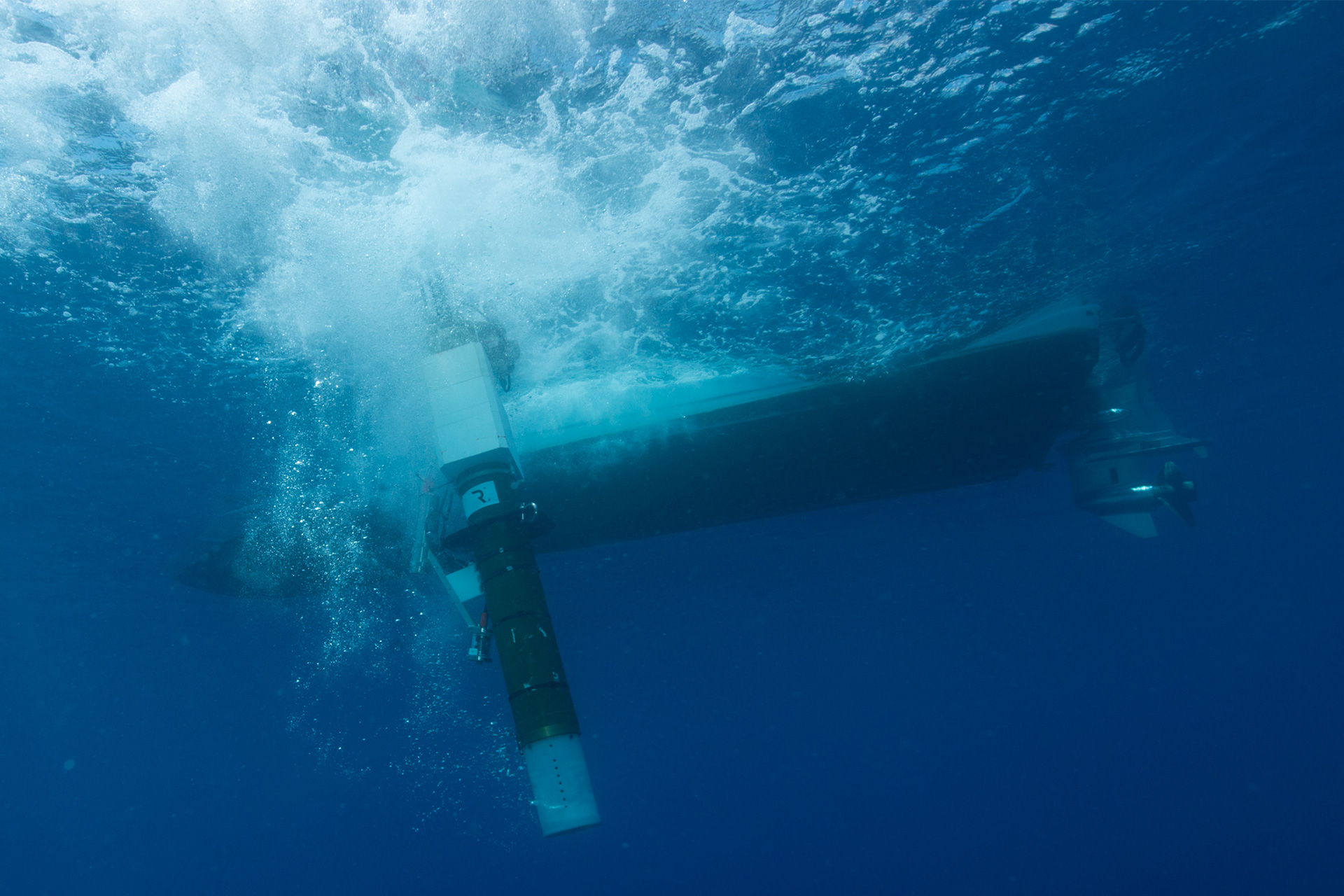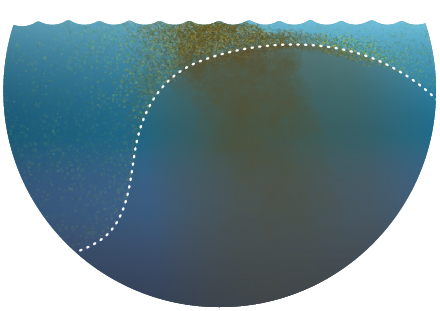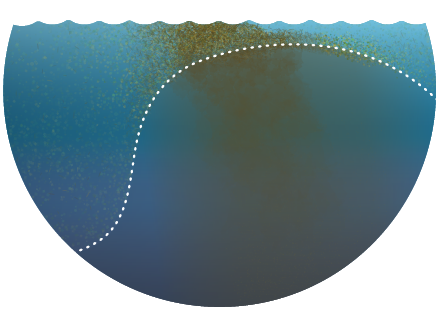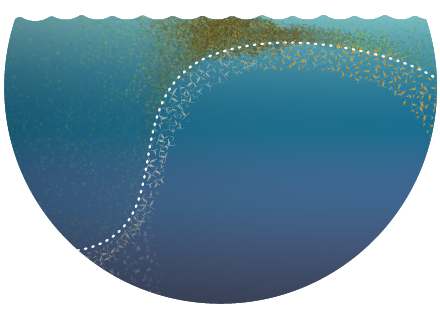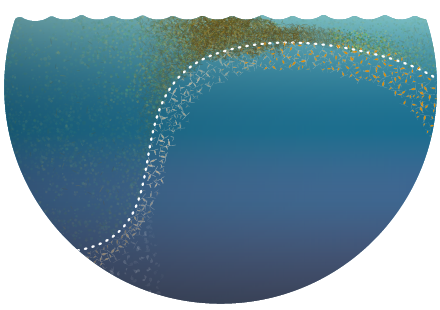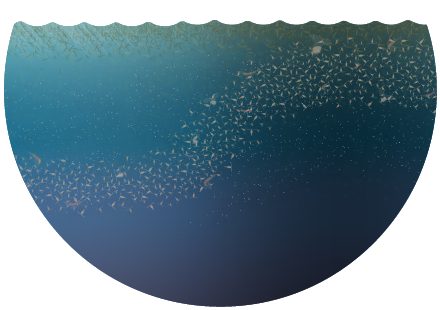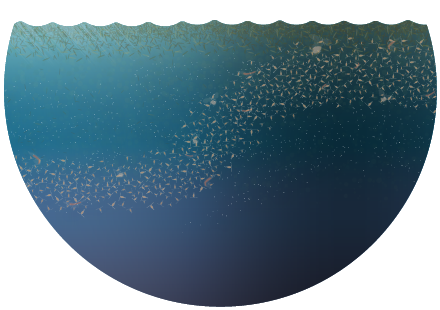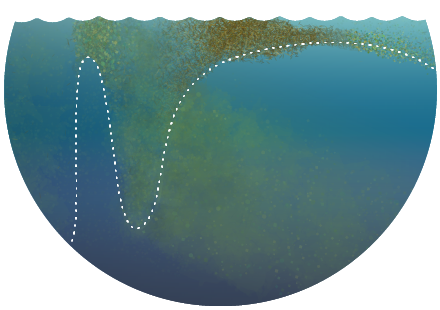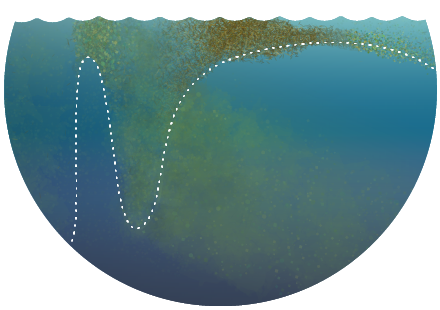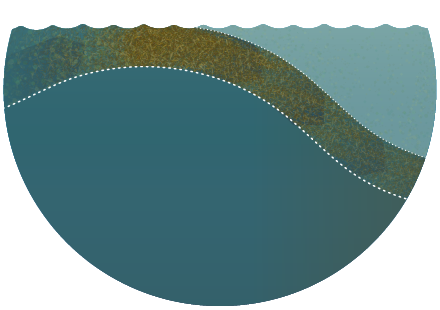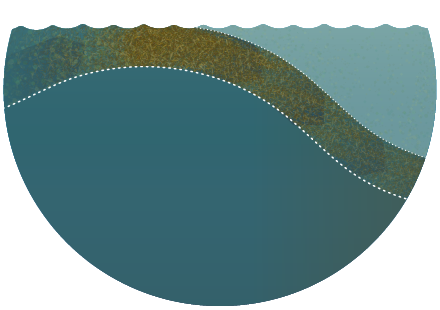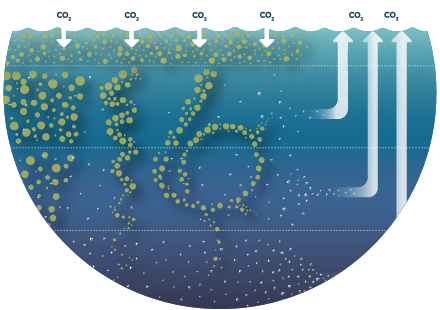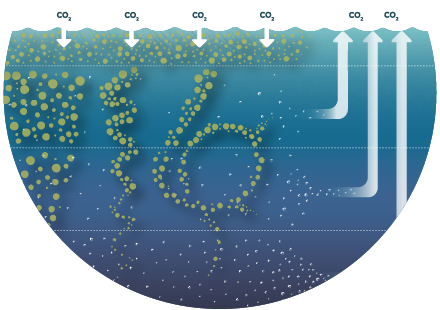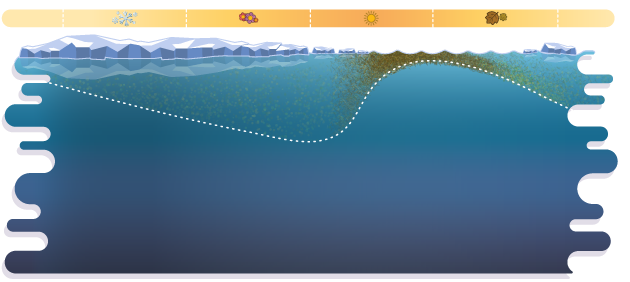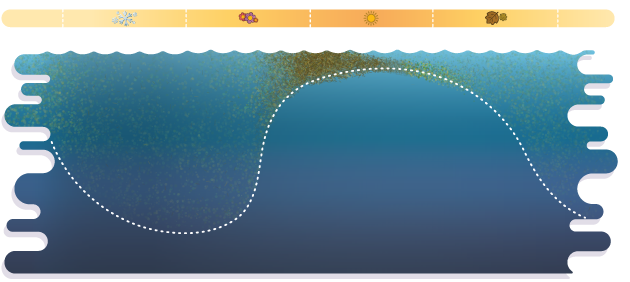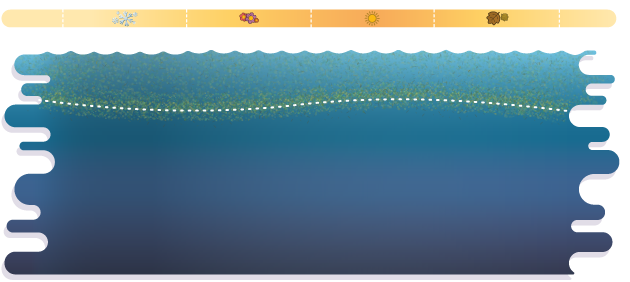The Twilight Zone, located between the depths of ~ 100 m and 1000 m, is one of the least known environments on Earth: we mandatorily need to explore it as it provides essential services for our society and is pivotal to the ocean carbon cycle.
The Twilight Zone (TZ), being beyond the reach of sunlight, is critically undersampled and understudied during most ship-based oceanographic cruises while its depths elude satellite remote sensing. Yet the TZ plays an essential role in regulating the sequestration of carbon dioxide from the atmosphere for centuries or longer; in addition, the TZ hosts unique ecosystems and huge fish populations, which can potentially contribute to mitigating food insecurity; finally, the TZ is where global ocean deoxygenation occurs.
The ocean’s carbon-sequestration capacity is largely controlled by the Biological Carbon Pump (BCP). The BCP is driven by processes that control both the downward export (pump strength) of biogenic carbon photosynthesized in the well-lit Euphotic Zone (EZ, between surface and ~100m), as well as the remineralisation (pump efficiency) of part of this sinking carbon in the underlying TZ.
According to a recently formulated paradigm, the BCP is controlled by the cumulative and combined action of six different biologically- or physically-mediated pumps, namely: the Gravitational Pump, the Seasonal Migration Pump, the Diel Migration Pump, the Mixed Layer Pump, the Eddy Subduction Pump and the Large Scale Subduction Pump (not specifically addressed here).
REFINE proposes a framework for an integrated observational approach of five of these Biological Carbon Pumps in the World Ocean.
